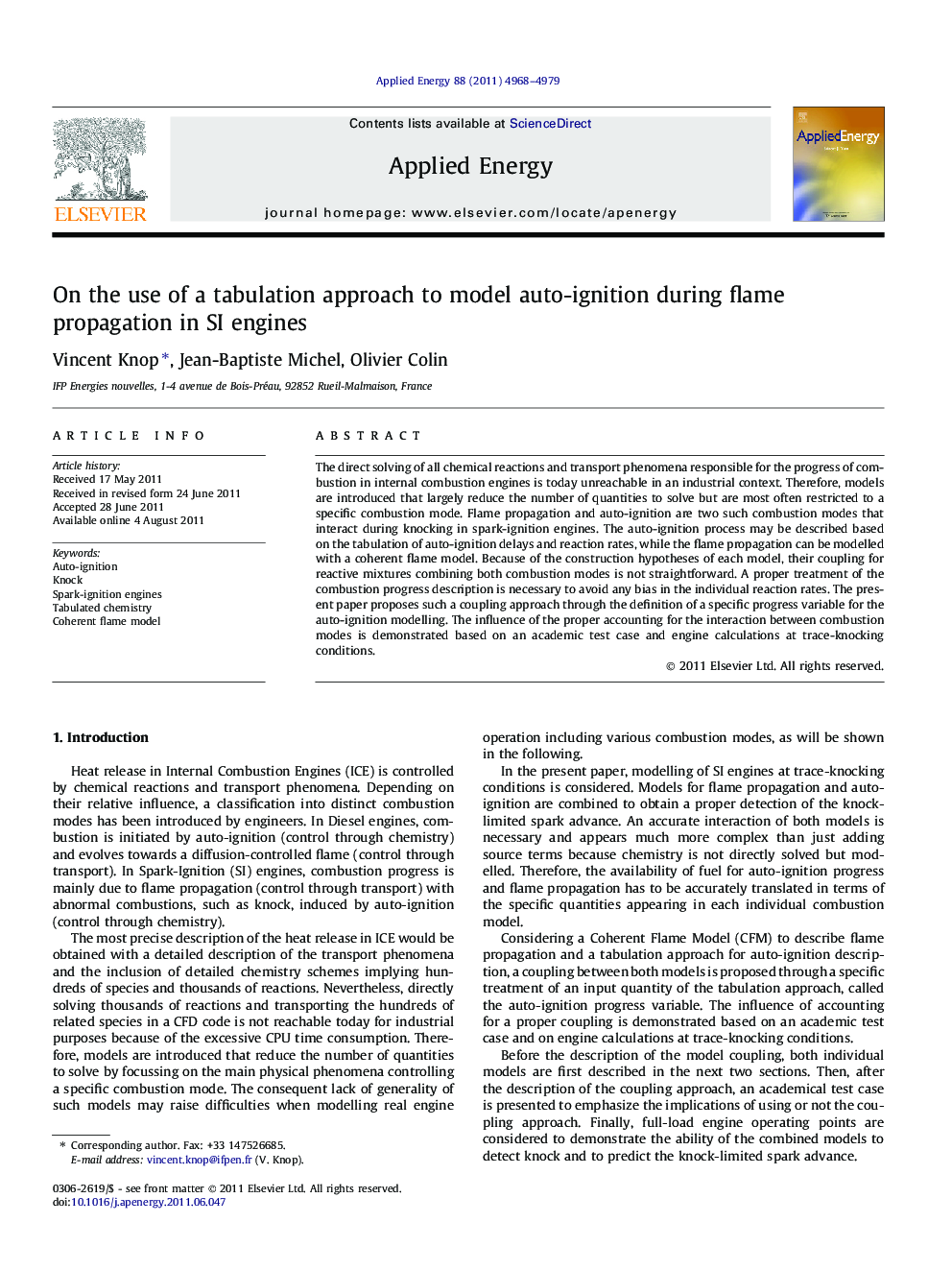| Article ID | Journal | Published Year | Pages | File Type |
|---|---|---|---|---|
| 244022 | Applied Energy | 2011 | 12 Pages |
The direct solving of all chemical reactions and transport phenomena responsible for the progress of combustion in internal combustion engines is today unreachable in an industrial context. Therefore, models are introduced that largely reduce the number of quantities to solve but are most often restricted to a specific combustion mode. Flame propagation and auto-ignition are two such combustion modes that interact during knocking in spark-ignition engines. The auto-ignition process may be described based on the tabulation of auto-ignition delays and reaction rates, while the flame propagation can be modelled with a coherent flame model. Because of the construction hypotheses of each model, their coupling for reactive mixtures combining both combustion modes is not straightforward. A proper treatment of the combustion progress description is necessary to avoid any bias in the individual reaction rates. The present paper proposes such a coupling approach through the definition of a specific progress variable for the auto-ignition modelling. The influence of the proper accounting for the interaction between combustion modes is demonstrated based on an academic test case and engine calculations at trace-knocking conditions.
► Flame propagation and auto-ignition are two distinct combustion modes. ► Such combustion modes interact during knocking in engines. ► There is a combustion model for each combustion mode. ► A coupling rather than a simple addition of models is necessary to get sound results.
